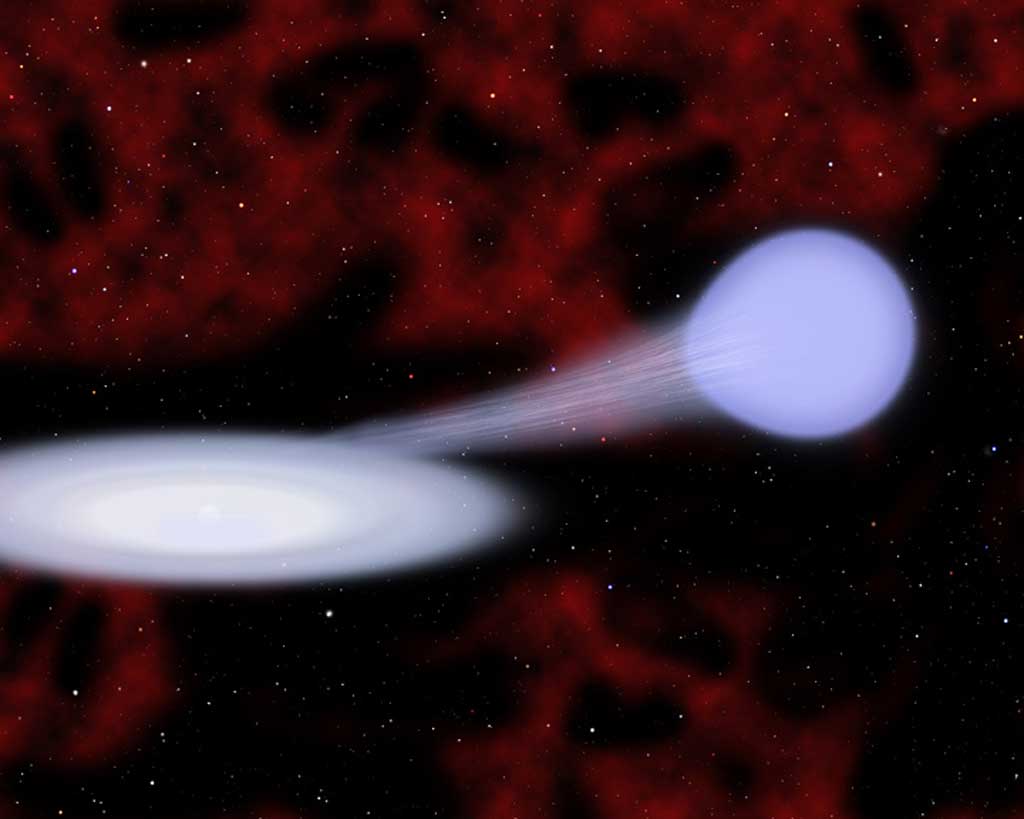“A type Iax supernova is essentially a mini supernova,” said Ryan Foley from the Harvard-Smithsonian Center for Astrophysics (CfA) in Cambridge, Massachusetts. “It’s the runt of the supernova litter.”
Foley and his colleagues identified 25 examples of the new type of supernova. None of them appeared in elliptical galaxies, which are filled with old stars. This suggests that type Iax supernovae come from young star systems.
Based on a variety of observational data, the team concluded that a type Iax supernova comes from a binary star system containing a white dwarf and a companion star that has lost its outer hydrogen, leaving its helium dominated. The white dwarf collects helium from the normal star.
Researchers aren’t sure what triggers a type Iax. It’s possible that the outer helium layer ignites first, sending a shock wave into the white dwarf. Alternatively, the white dwarf might ignite first due to the influence of the overlying helium shell.
Either way, it appears that in many cases the white dwarf survives the explosion, unlike in a type Ia supernova where the white dwarf is completely destroyed. “The star will be battered and bruised, but it might live to see another day,” said Foley.
Foley calculates that type Iax supernovae are about a third as common as type Ia supernovae. The reason so few have been detected is that the faintest are only one-hundredth as bright as a type Ia.
“Type Iax supernovae aren’t rare, they’re just faint,” said Foley. “For more than a thousand years, humans have been observing supernovas. This whole time, this new class has been hiding in the shadows.”
The Large Synoptic Survey Telescope, in which the CfA is a partner, could discover thousands of type Iax supernovae over its lifetime.










